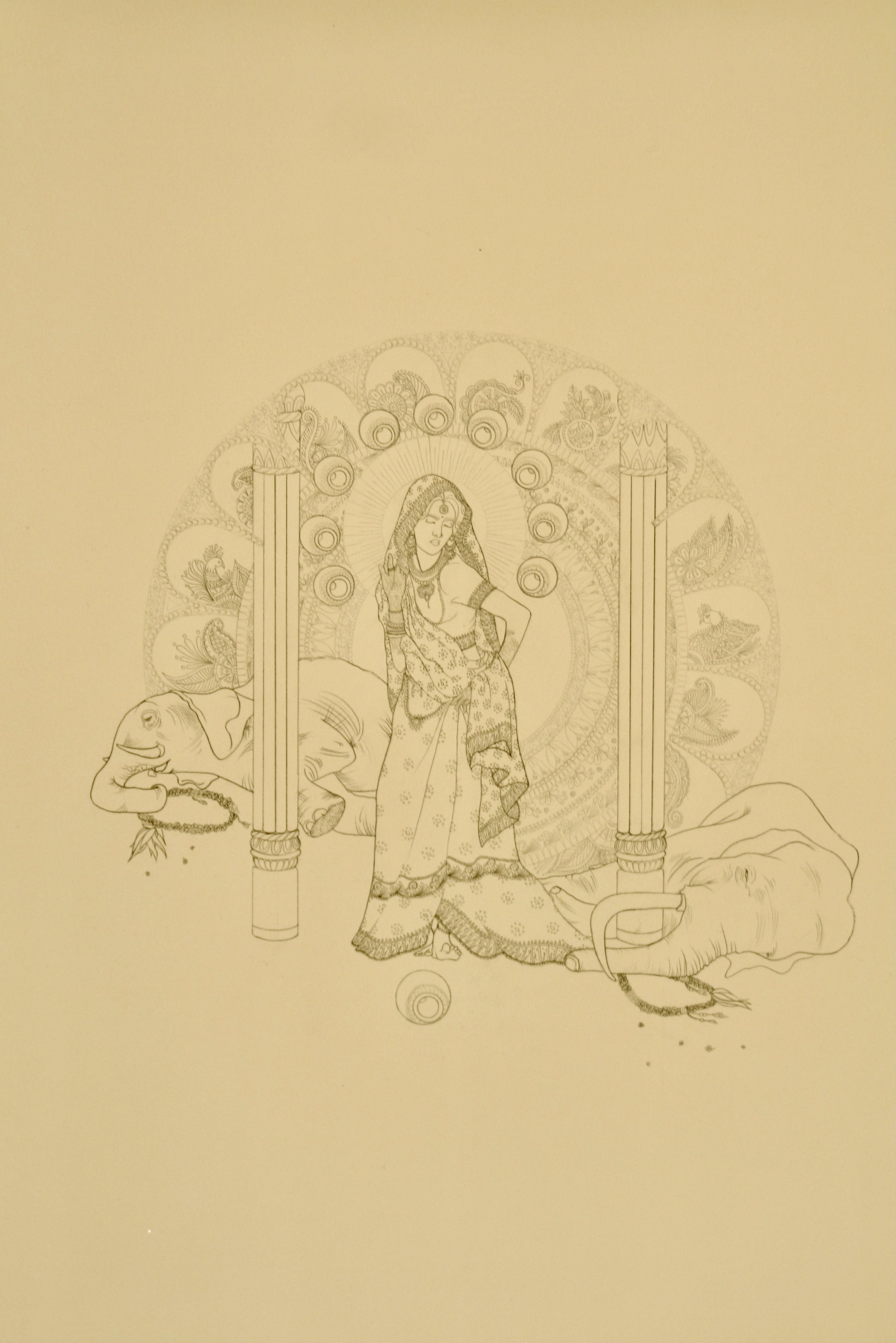
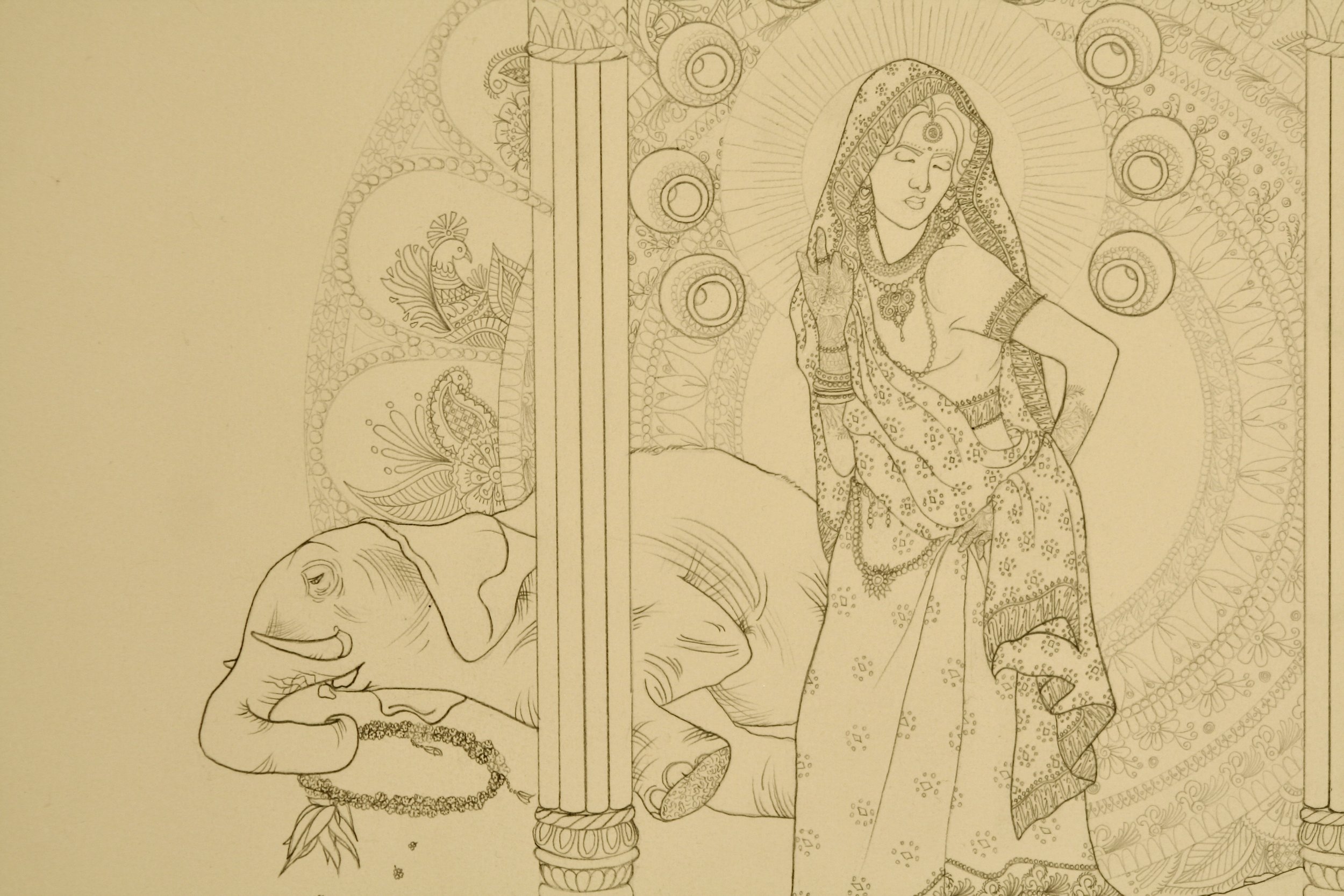
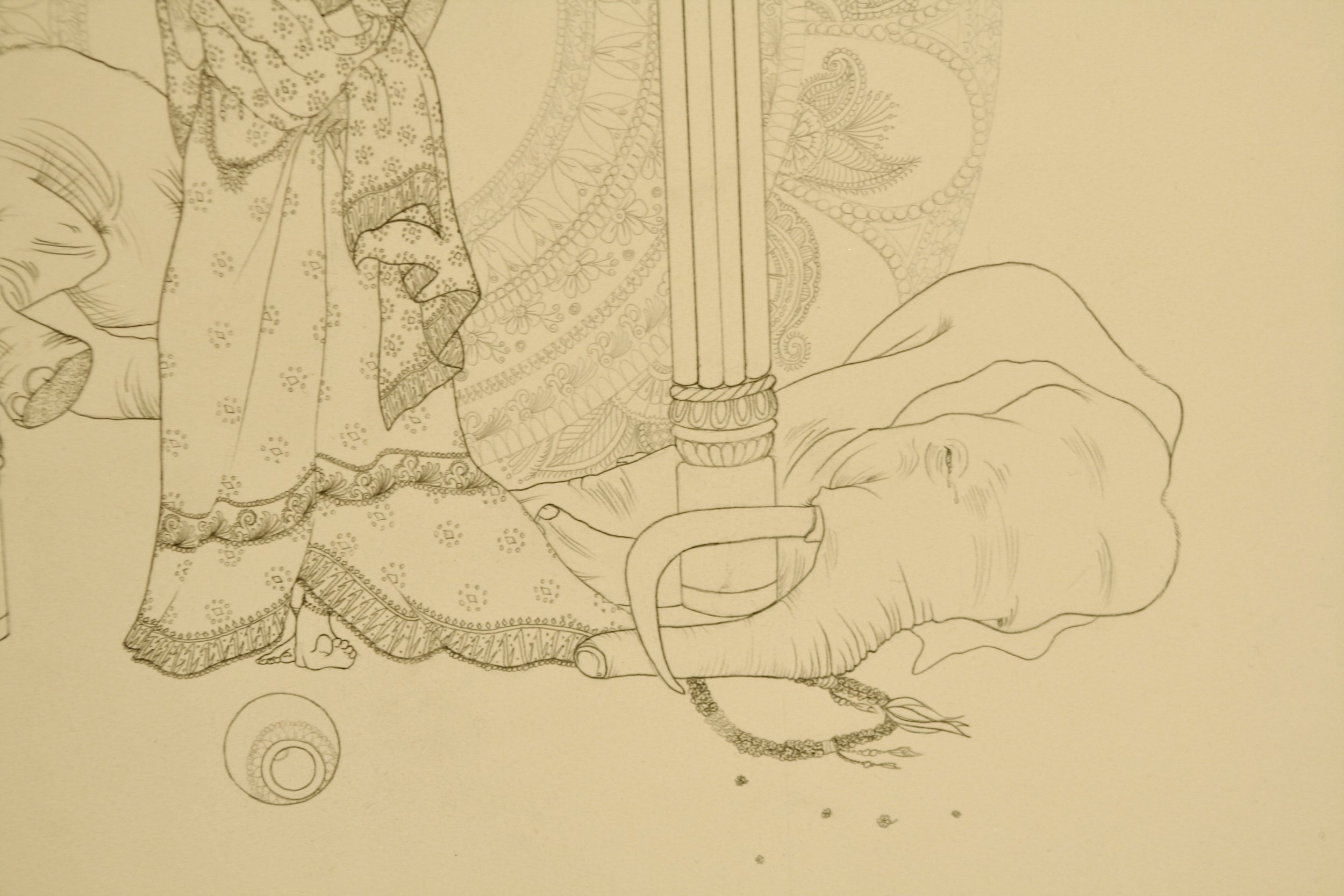
“Cursed Lakshmi”
Graphite on Paper
24” x 36”
2009- 2010
In Hinduism, Goddess Lakshmi epitomizes wealth and prosperity. In the more traditional and mainstream representations, she is usually seated on a large pink lotus, adorned in lavished gold jewelry and a finely woven pink sari, surrounded by white elephants hurling floral garlands at her, and is carrying gold urns overflowing with gold coins. People facing financial and economic turmoil pray to the goddess for future prosperity.
However, the title, “Lakshmi” is also given to a new, young bride. In Hindu society, a bride is welcomed to the groom’s family with supposed equal amounts of splendor, as it is her duty or dharma to look after all members of the family, and to birth sons who will continue the family name and lineage. Lakshmi brings with her dowry wealth— often offered at the time of the wedding to the groom’s family by the bride’s family. The dowry is offered in exchange for the commitment to care for the new daughter-in-law. In many other cultures, the term dowry is frowned upon and instead, families use the term “bride price.”
The reality is vastly different. In India, according to the 2020 National Crime Records Bureau, over 7000 dowry-related deaths/murders were recorded. It is hard to assess how many death occured in total as many dowry-based murders and suicides go unreported. Other sources state that 20 women die each day in India due to dowry-related disagreements and problems. The Dowry Prohibition Act which was enacted in 1961 has unfortunately failed, as the practice to this day remains common. Traditions are hard to eradicate, and in today’s modern India, parents offer “marriage gifts” in the form of dowry. Also known as “New Dowry” heavily composed of cash and market good such as expensive foreign-made vehicles, land/ property, livestock, and appliances. Families are known to go bankrupt in order to get their daughters married off. And when families fail to avail larger market goods, violence against the bride is a common symptom, often leading to suicides and murders.
The “Cursed Lakshmi” looks beyond the disguised fictional narrative of the blessed Lakshmi, and reveals the truth of thousands of women who die each year.
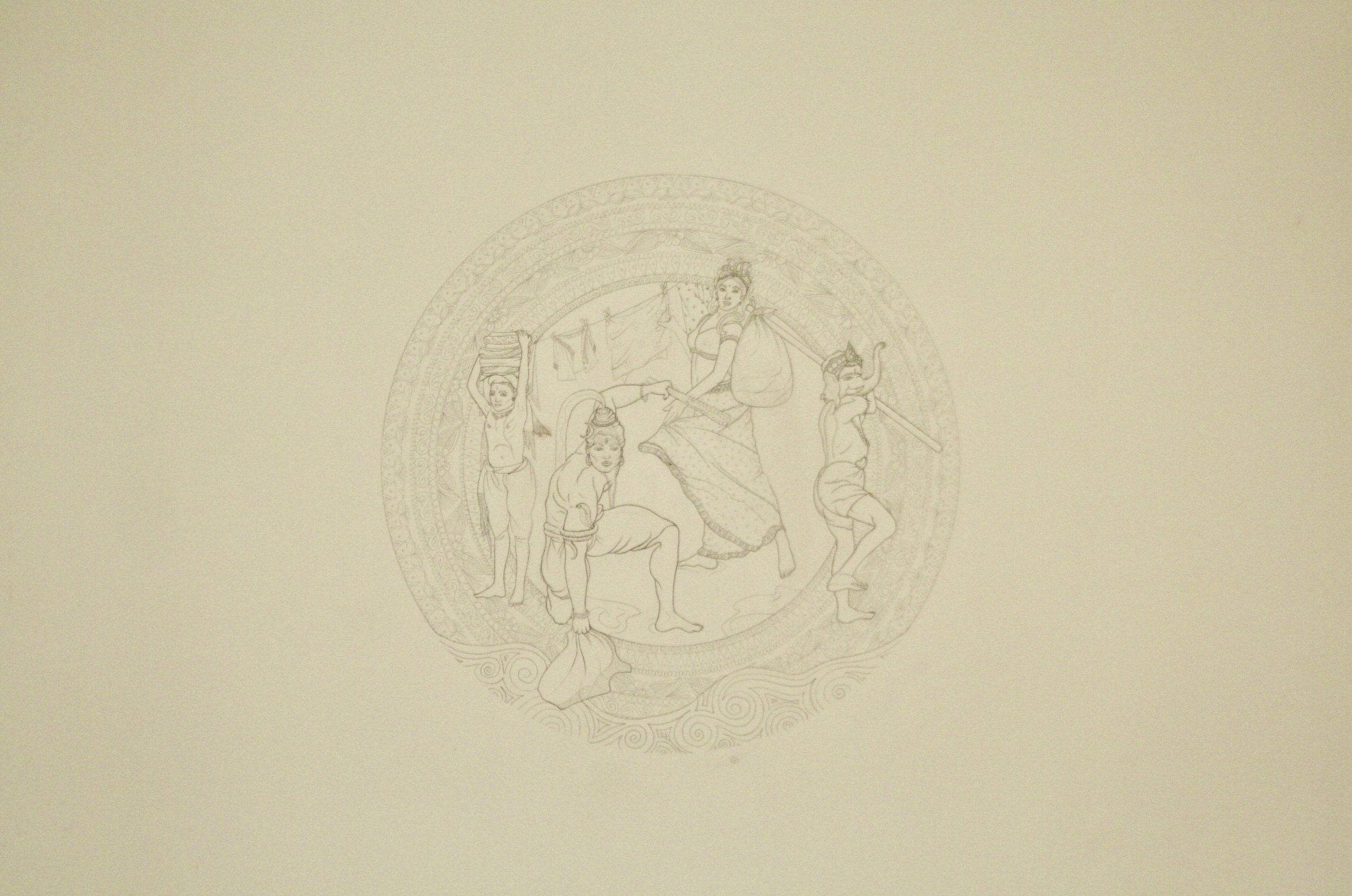
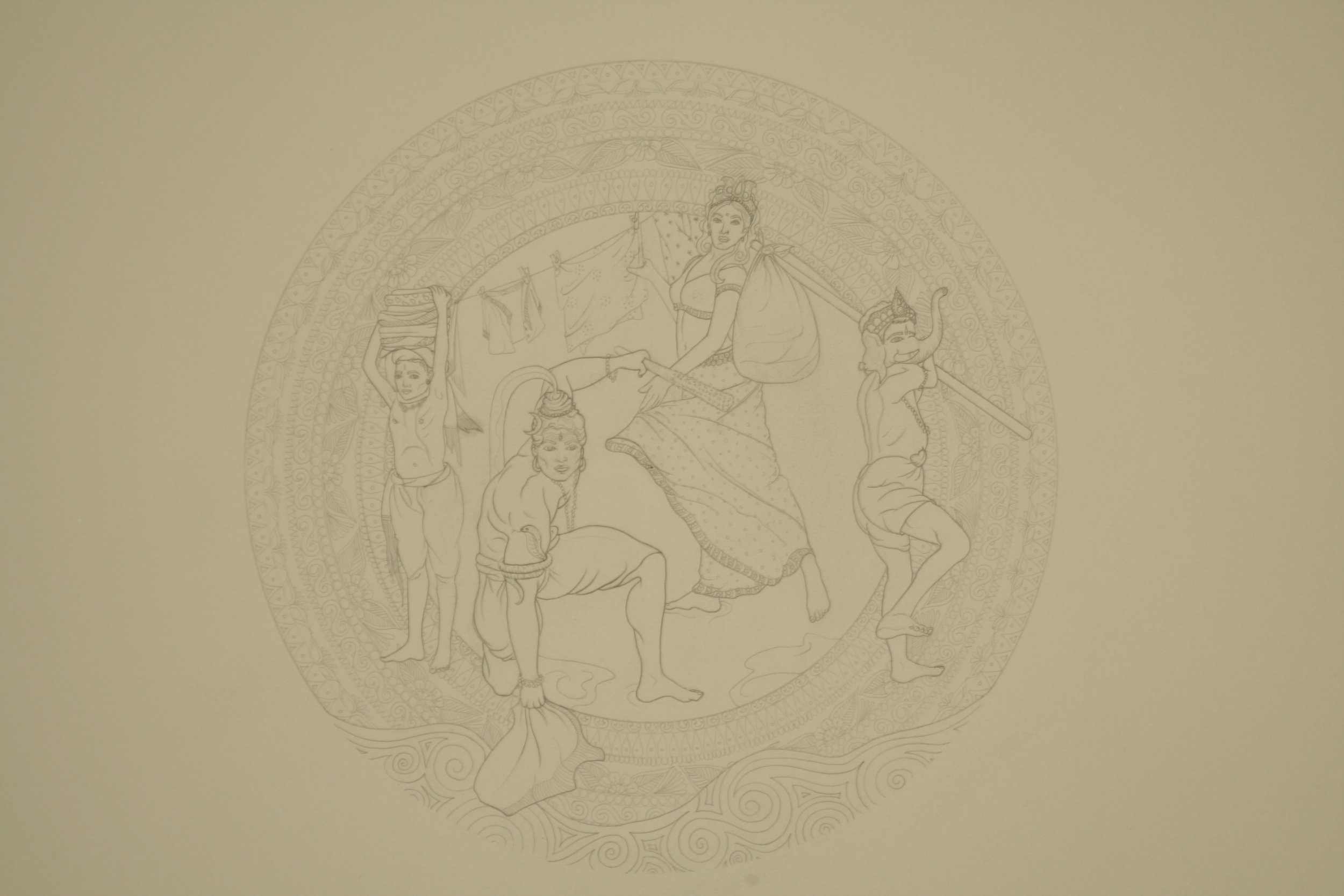
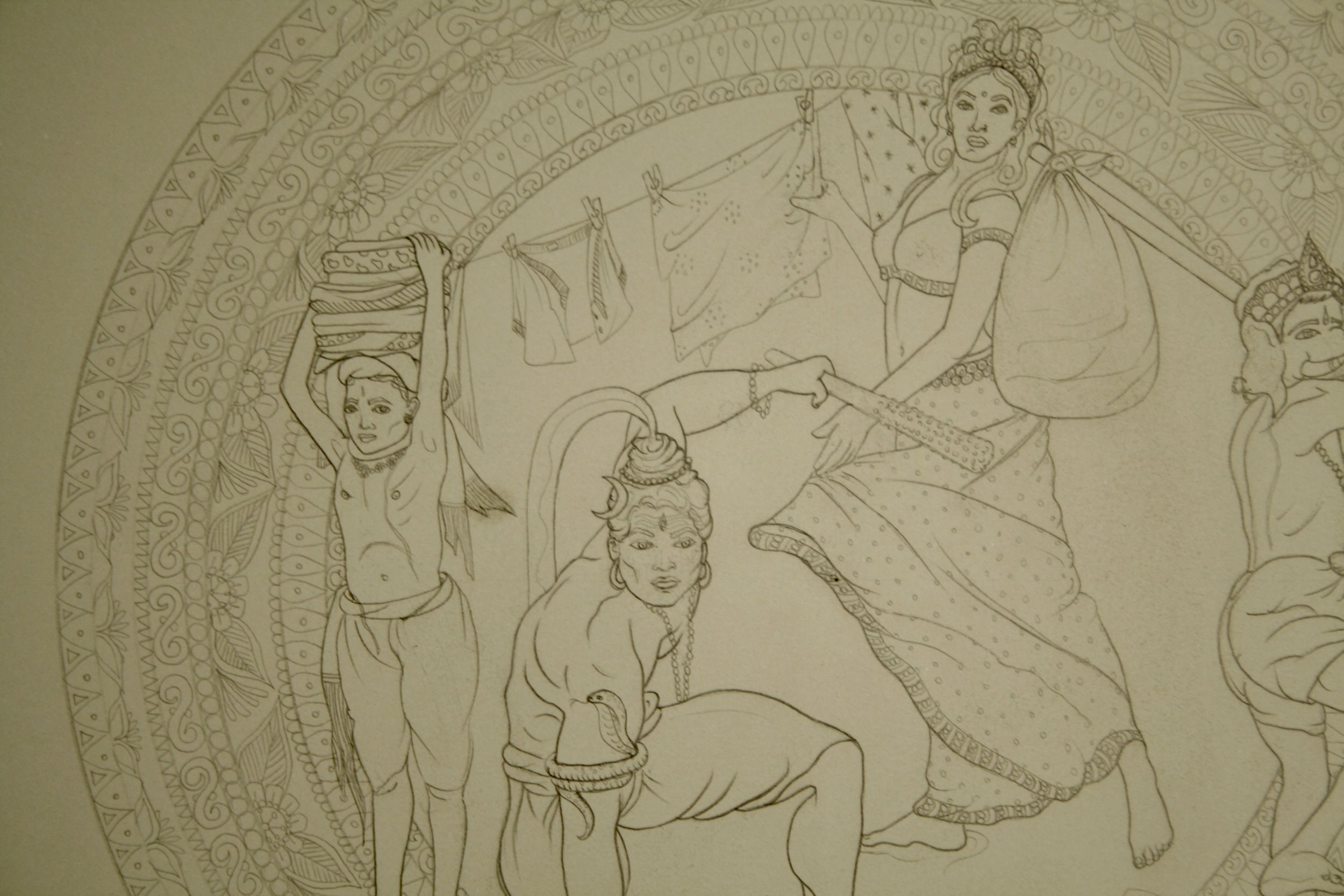
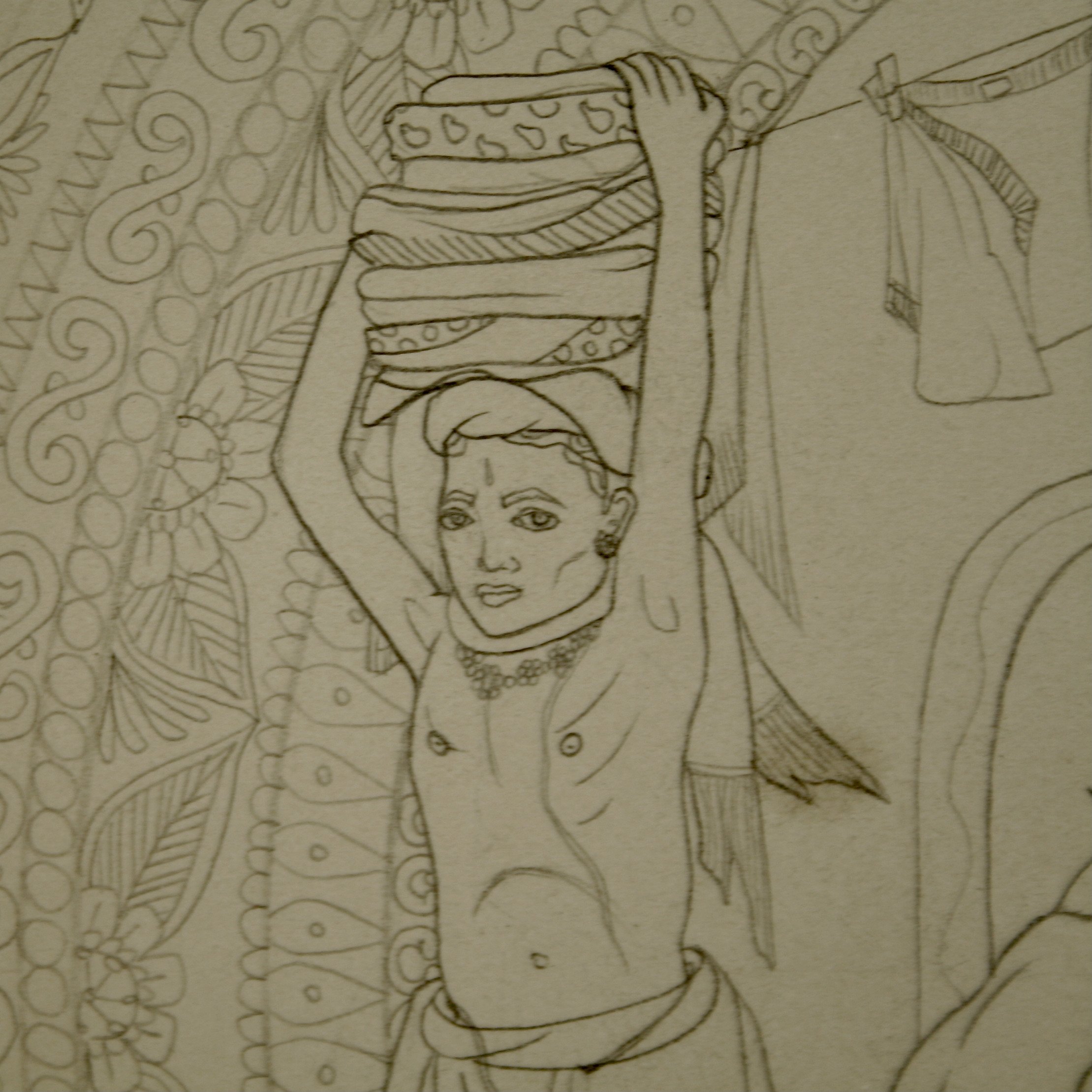
“Varna Dharma” (Caste Duty)
Graphite on Paper
24” x 36”
2009- 2010
One of the objectives of Hinduism, ever since its mention in the Rigveda (c. 1500 B.C.E.) is to maintain and preserve caste purity. This can be done through numerous restrictions, but endogamy, or marriage within the caste, is the most effective way through which caste purity is preserved. These ancient ideologies that were originally written in Sanskrit, with the Aryan migration, continue to be restored and practiced— where marriage within one’s own caste allows for the social standing to remain pure and honored.
Another disciplined objective to be maintained within each caste is the concept of “varna dharma” or caste duty. Each caste is affiliated with certain professions and responsibilities. For instance, Brahmins are considered to be on the top of the social order of the caste system, and they are considered to be the most literate, as they were the only caste group who had the privilege of learning and teaching the ancient Hindu Sanskrit texts. This is the reason why we call Sanskris-based textual knowledge as Brahminical knowledge. Dalits, previously referred to as untouchables, were relegated as being outside of the caste system, and their responsibilities and duties were affiliated with the most uncouth of professional tasks— cleaning sewers, collecting the carcasses of deal animals, cleaning up after cremations of dead bodies, et cetera. Likewise, in between, we have castes affiliated with traders and merchants, and warriors.
The reason for doing this body of work— drawings based on the contradictions that are embedded within Hinduism is to highlight how Hindu textual history has enormous inconsistencies and contradictory messaging. “Varna Dharma” depicts the family of Parvati and Shiva as Dalits. And the reason for this representation is because also within one of the most influential Hindu texts known as a Maha Upanishad (One Earth. One Family. One Future), it praises the concept of “Vasudhaiva Kutumbakam,” also known as the unification of all beings as equals. Ironically, the concept of “equality” goes against the ancient practice of varna dharma, which delineates strict boundaries between castes. However, if gods and deities are a symbol of equality for all, then why is it, that we do not see Shiva as a laundry cleaner? “Varna Dharma” is an attempt at displacing historical representations with the contradictions that exist within Hindu texts on caste.
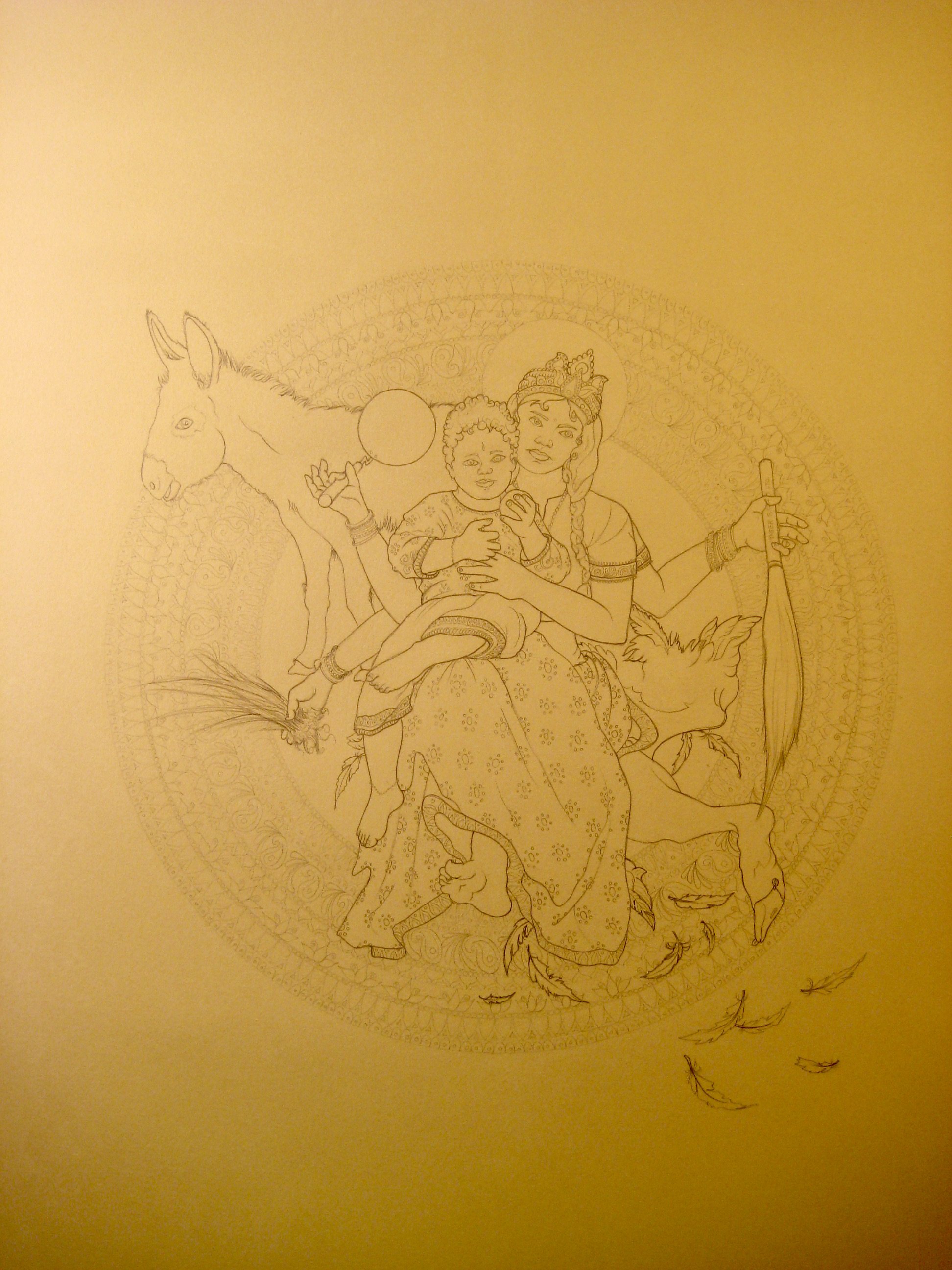
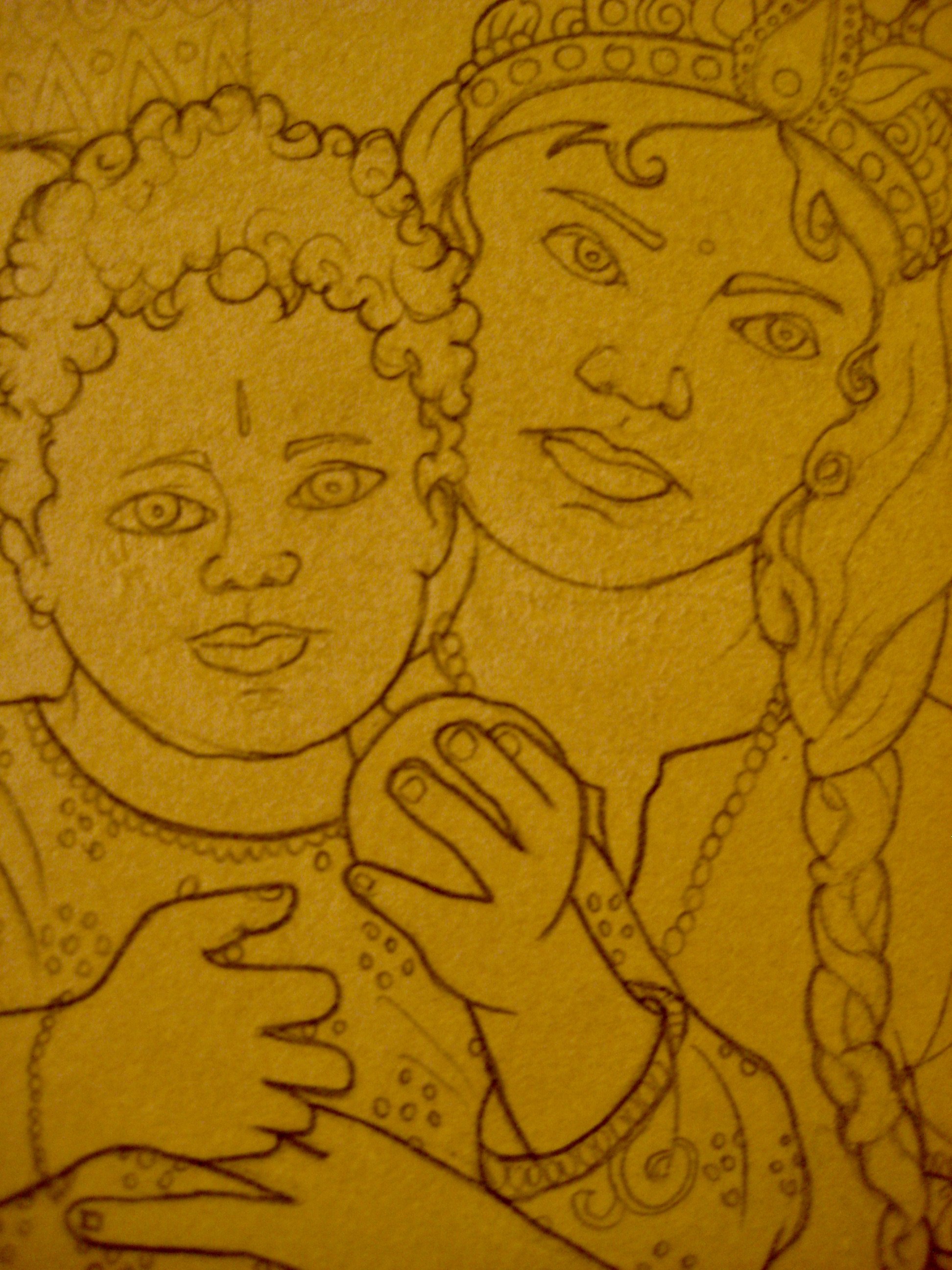
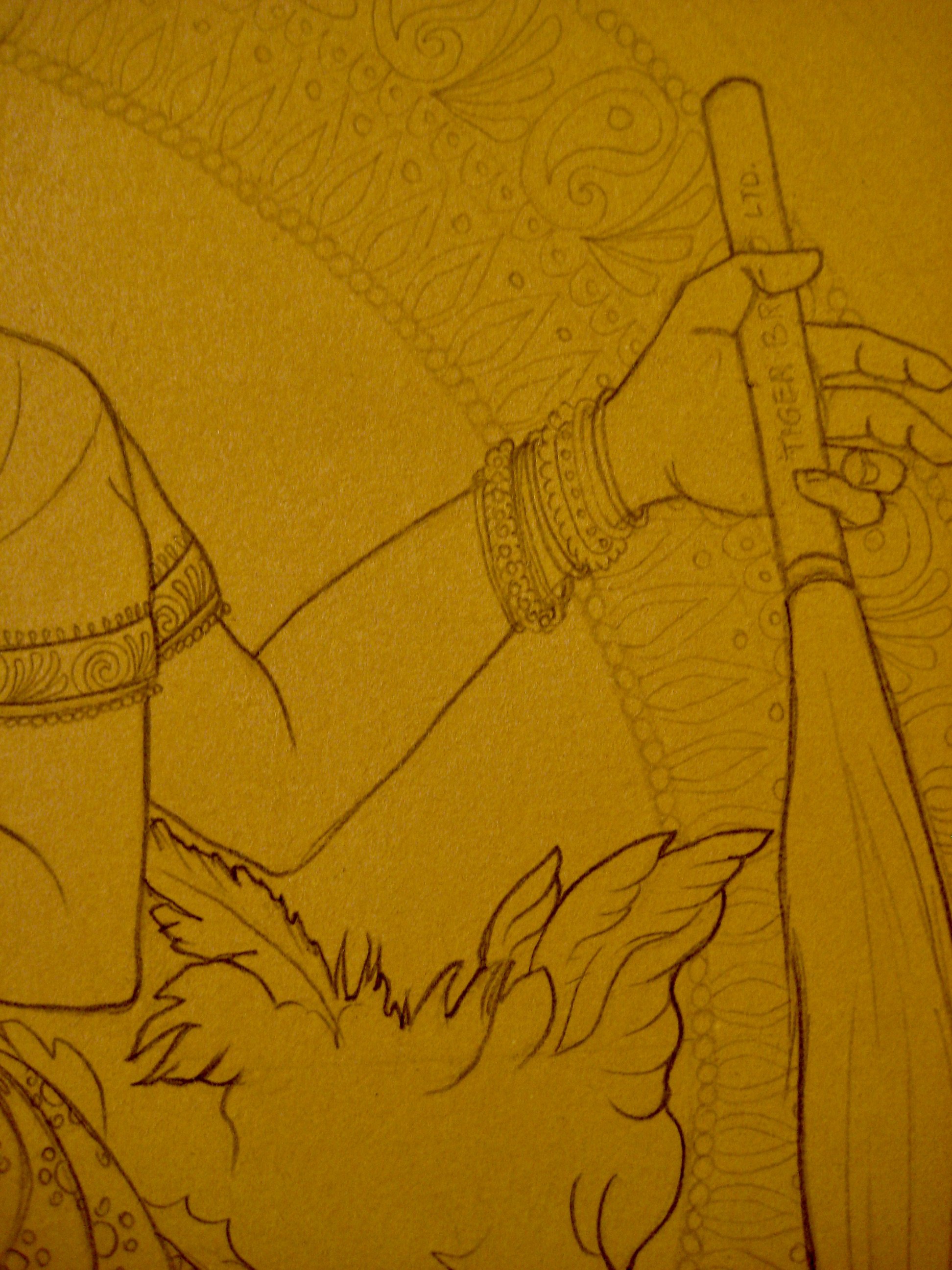
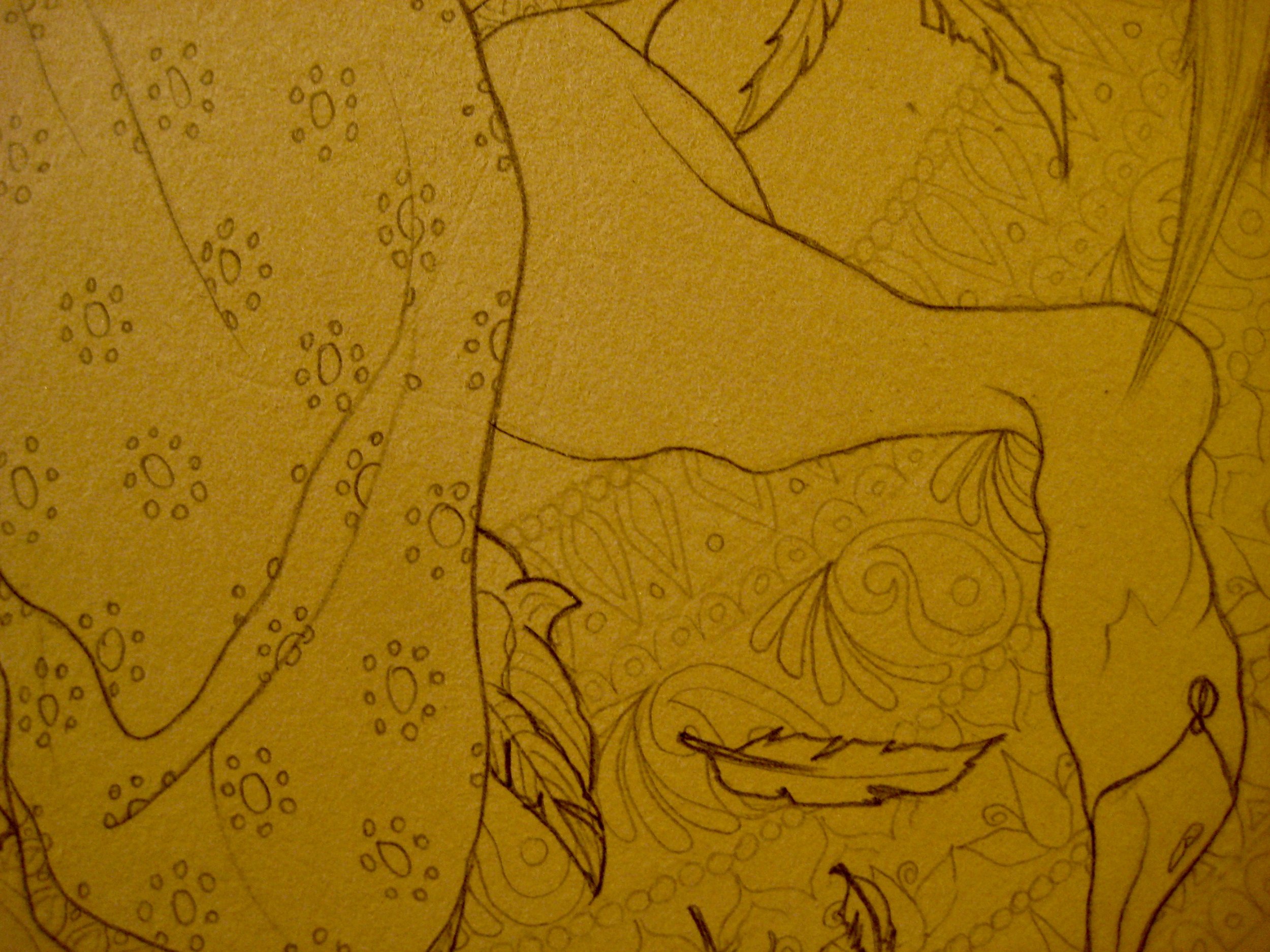
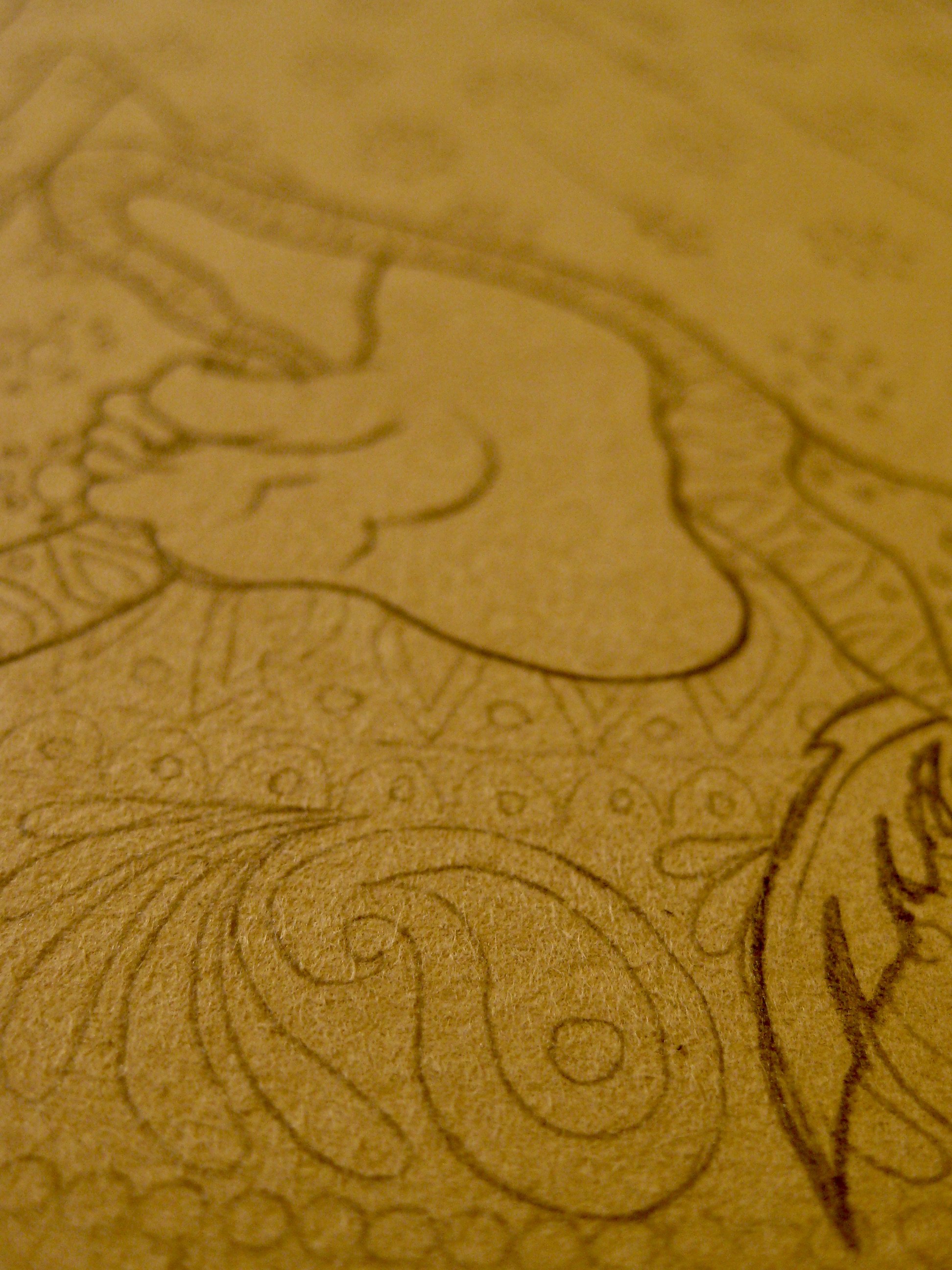
“Temporality of Knowledge”
Graphite on Paper
24” x 36”
2009- 2010
Though I am not a follower of any religious faith or spiritual organization, a Goddess that I have truly admired is Saraswati. Known for creativity, knowledge, and music, the traditional depiction of Goddess Saraswati is of a woman with multiple arms, each holding an item that represents her. She is usually depicted as carrying a manuscript in one hand, symbolic of education, literature, and knowledge, with the other two hands she holds a veena (a string-based musical instrument) which signifies her love for music and creativity, but also the harmony between the mind and the body, and lastly, in one hand she carries prayer beads which are symbolic of spiritual knowledge. Besides the emblematic items she carries in her hands, each Hindu deity is paired with an avatar of an animal that additionally represented them and acts as their vehicle, hence, Saraswati sits either on or beside a white swan, symbolic of beauty and pride, but the swan simultaneously cautions people to remain free from vanity and ego. This is one of the primary reasons why Saraswati is one of the few Hindu goddesses who refrain from wearing lavished gold jewelry and is adorned in a simple white sari, as white symbolizes knowledge and simplicity. Saraswati also is unique from other goddesses in Hinduism, as she is the one female deity who chooses not to have children, and prefers a life of independence with intellectual rigor being her primary focus. In many words, Goddess Saraswati is truly an emblem of a modern-day independent woman who lives a life focused on enhancing her own desires through knowledge and creative freedom.
However, this is not the reality for most Indian women, or for that matter, a lot of women globally. Social scientist and historian, Prem Chowdhry, in her work on Indian oral traditions suggests that there are passed-down oral statements from the Sanskrit language, as well as in Hindi, which clearly states that especially a woman with knowledge ought to be disciplined and showed her place in society based on gender norms. Oral traditions that include statements such as: “woman is no better than a man’s shoe,” “a woman’s advice should not be heeded,” “only a brainless man follows a woman’s advice,” and “a woman should not be given any importance,” are constructs of a patriarchal lineage, and to this day, they continue to be stated and believed. Thus, the representation of female Hindu deities reveals a supposed female empowerment, a culture where women have agential rights and freedoms, they have skills and knowledge, they are beautiful and knowledgeable, and they are creators and destroyers.. but in reality, the picture looks vastly different. In reality, Saraswati sits on a dead swan, in place of a manuscript she holds a child, in place of the veena, she carries irrigated rice. In place of prayer beads, she holds a broom.
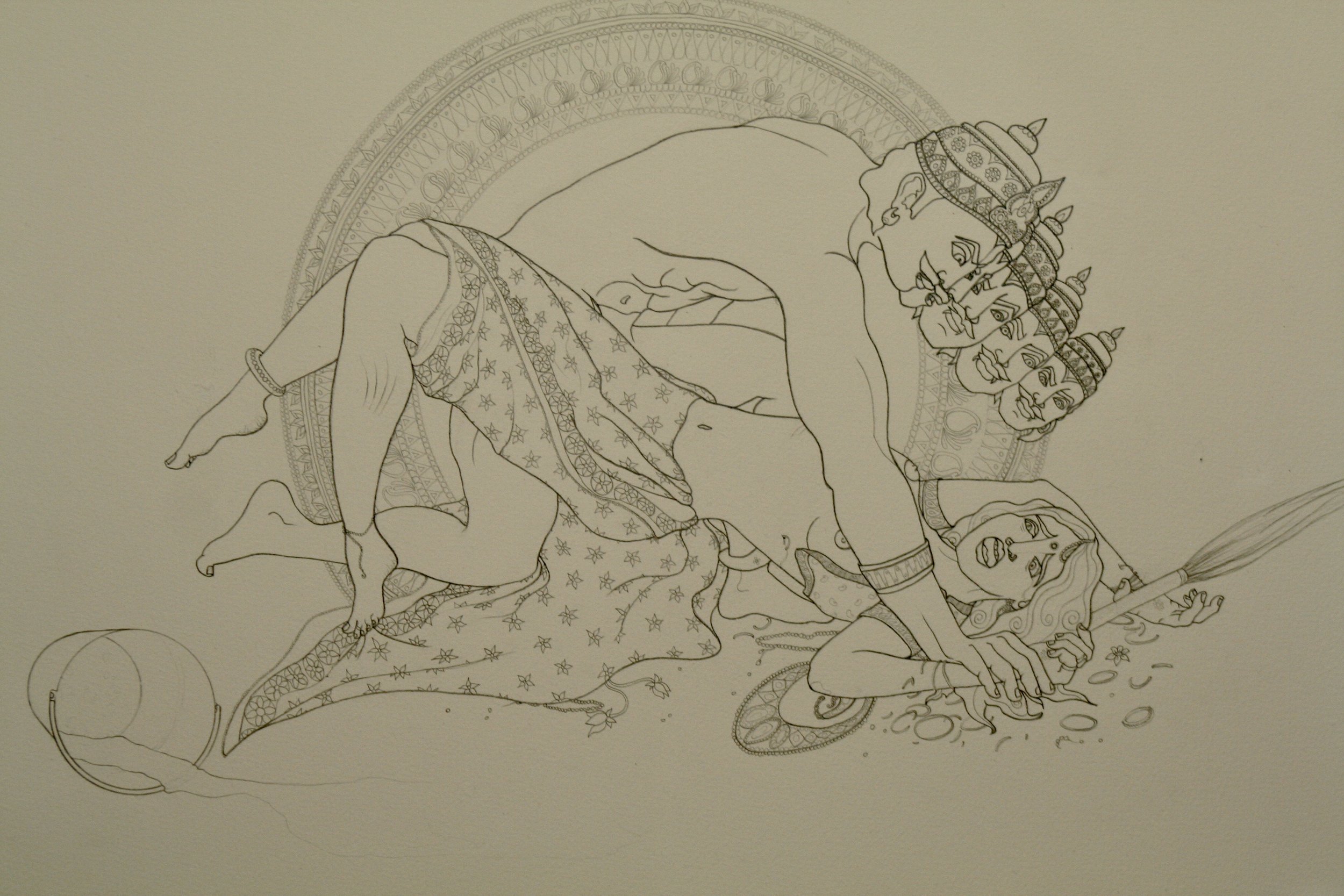
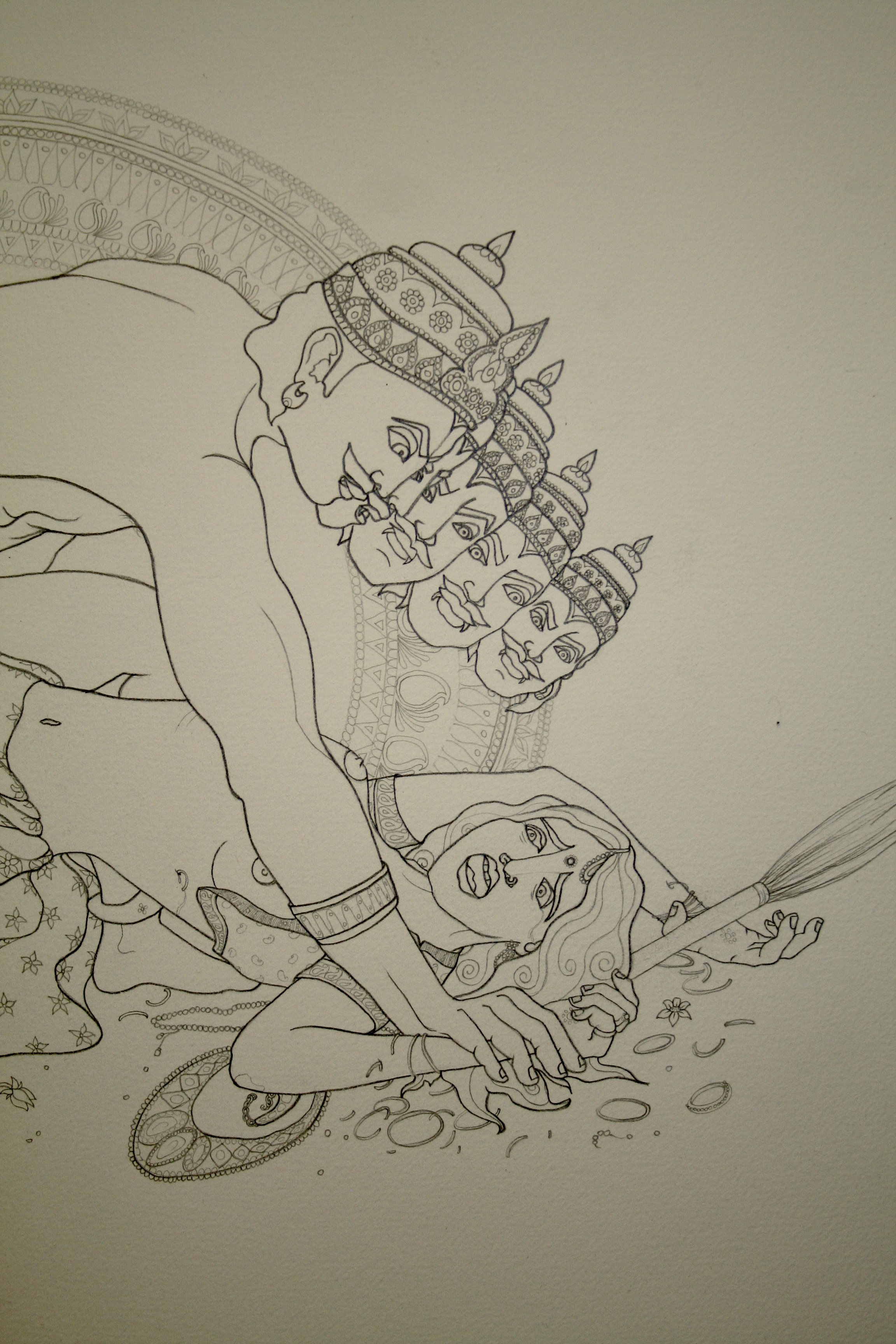
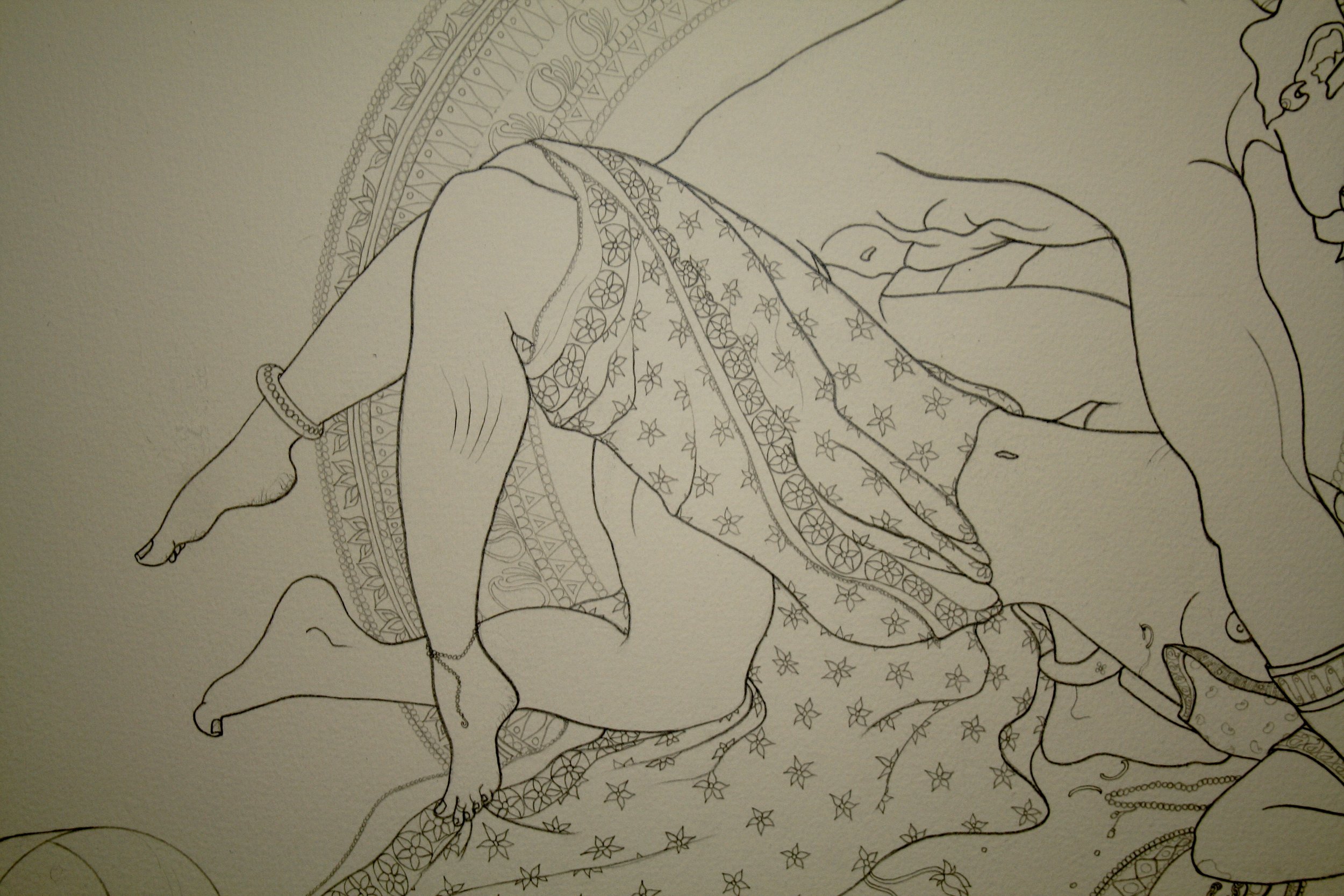


“The Plight of Sita”
Graphite on Paper
24” x 36”
2009- 2010
“The Plight of Sita” is based on the Mathura rape case, which was the landmark case that challenged and changed India’s rape laws. On March 26th, 1972 a young tribal girl, by the name of Mathura was gang raped by two uniformed police officers in Desaiganj, Maharashtra. At the time, the young girl was around 15 years old, and was in a relationship with her employer’s relative, Ashok. As per tribal laws, tribal girls who are in a relationship have to be in live-in cohabitation conditions, until the appropriate time for marriage is deciphered based on the couple’s economic security. The young girl’s brother was opposed to his sister’s relationship with Ashok and filed an FIR (First Information Report) with the local police. The girl, along with her family, was summoned to the police station for her statement. The constables on duty were Tukaram and Ganpat, demanding the family wait outside while they performed a proper investigation of Mathura. Inside the police station, the two police officers took turns raping Mathura while her family anxiously waited outside. Upon hearing her screams, the family grew increasingly angry and crowds of people and onlookers gathered in numbers outside agitated by the scene that took place inside. Despite the power difference, Mathura took her case to court and fought her case till 1979. What resulted from the Mathura Rape Trial is the formation of the first feminist organization in Mumbai called “Forum Against Rape” later titled, “Forum Against Oppression of Women,” and numerous constitutional and legal changes that emerged with rape trials and rape investigations in India (like the currently illegal two-finger rape test).
“The Plight of Sita” depicts Lord Rama’s wife Sita being raped by the demon, Ravana. In the epic tale of the Ramayana Sita is abducted by Ravana, but historians and scholars continue to debate if Sita was allegedly raped by Ravana during the time of her captivity. Hindu epics and scriptures are well known for depicting women’s moral duty to be subservient and available to men’s desires. From The Laws of Manu requiring widows to be sexually available for their husband’s brothers, to the public molestation of Draupadi in the Hindu epic of the Mahabharata, a woman’s dharma (duty) is to be sexually available to men. However, the depiction of Hindu gods and deities performing such an act would be considered blasphemous. “The Plight of Sita” depicts an abhorrent act performed by a deity, as such crimes are often justified in India.
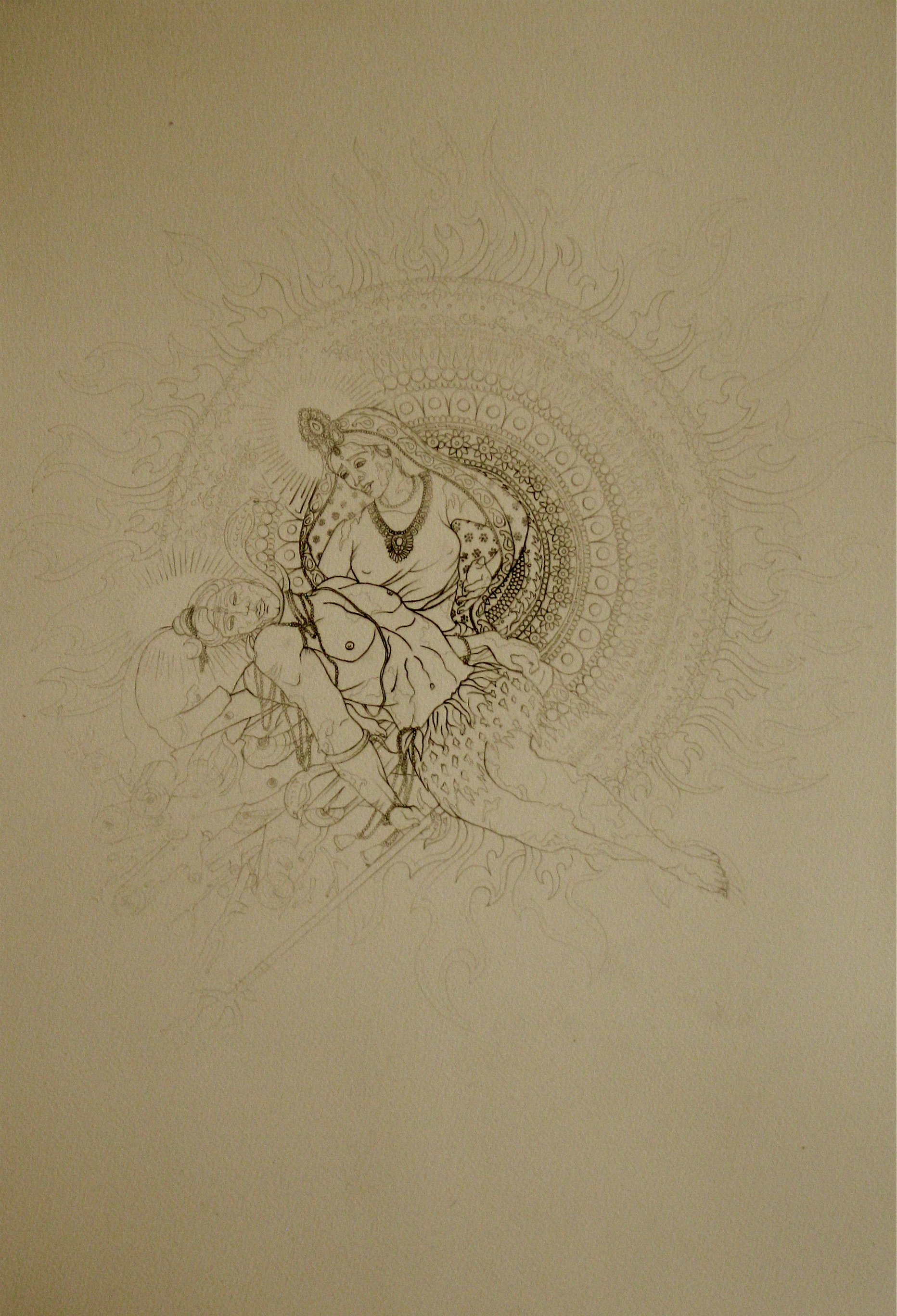
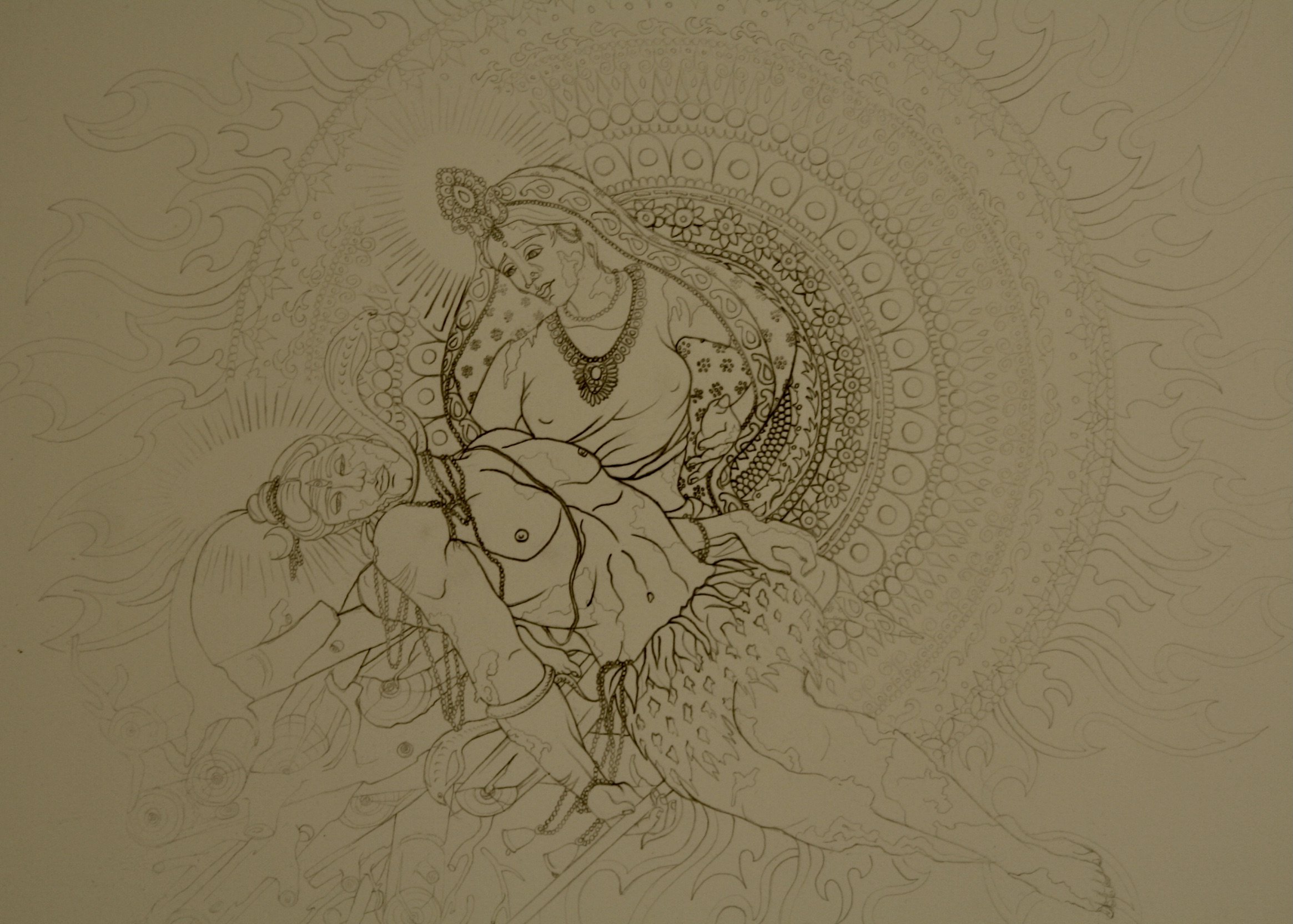
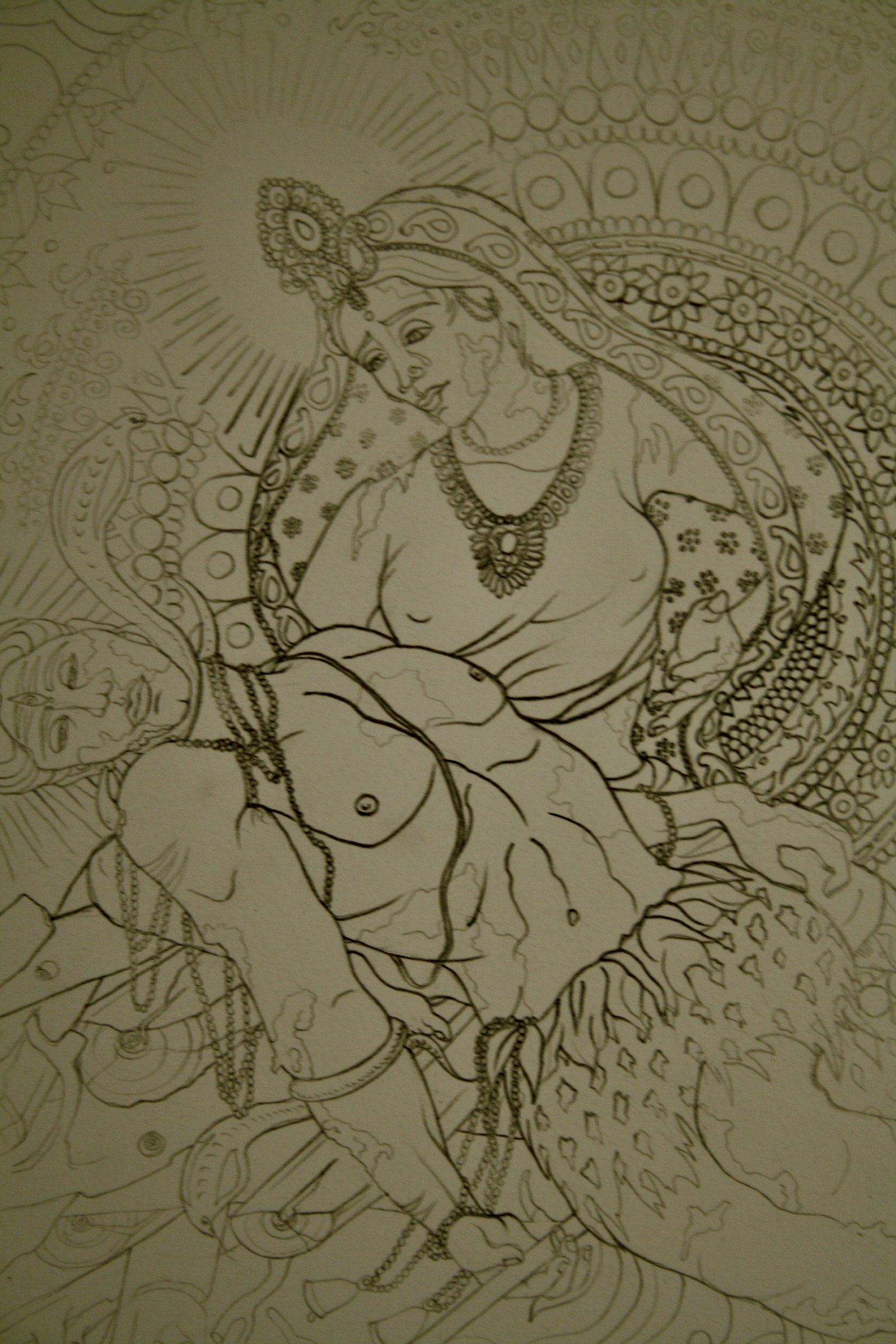

“Parvati’s Sati”
Graphite on Paper
24” x 36”
2009- 2010

